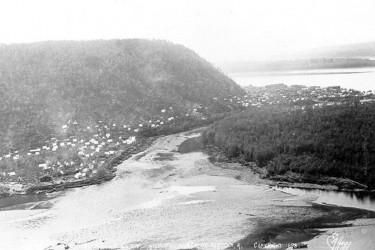By the time Roosevelt took office as president in 1901, fighting the environmental degradation of the American West was a centerpiece of his agenda. “I feel most emphatically,” he said, “that we should not turn to shingles a tree which was old when the first Egyptian conquerors penetrated the valley of the Eurphrates.” Together with Gifford Pinchot, a lanky socialite who had studied forestry in France before succumbing to the allure of the West, Roosevelt founded the U.S. Forest Service in 1905 to protect 230 million acres of land endowed to public ownership.
From its inception, the Forest Service was an underfunded, antagonized, ideologically contentious endeavor. Its first employees were sent into woods alone, on their own horses and often charged with patrolling thousands of acres. At the time, Congress was filled with cronies of corporate monopolies who were not keen on Roosevelt’s vision of conservation, so funding for the agency teetered on extinction. To survive its infancy, the Forest Service needed a rallying cry. It found one in wildfire.
“Of all the foes which attack the woodlands of North America, no other is so terrible as fire,” proclaimed Pinchot in 1900. By then, he was chief of the U.S. Forestry Division and aware that, unless he could unite the public around a cause, there might soon be no forests left to protect. With wolves nearly hunted to extinction, wildfire entered the popular imagination as the last beast of nature to be conquered and tamed.
In 1910, a wildfire incinerated a Western expanse the size of Connecticut, and Pinchot capitalized on the opportunity to cast as heroes the Forest Service employees who were maimed, injured, and killed battling the blaze.“Today, we understand forest fires are wholly within the control of men,” Pinchot concluded. Those men simply needed more funding.
And the funding came. Ten months later, Congress doubled the Forest Service budget. By 1935, over 600,000 people worked in public forests across the nation. But increased funding was far from an unalloyed win for the forests. More intact trees meant higher profits for the logging industry, which soon elbowed out conservationists from Forest Service leadership. Members of the West Coast Lumbermen’s Association were installed as Forest Service chiefs, elevating fire prevention to the agency’s top priority. Wildfires, new mandates proclaimed, must be suppressed within twenty-four hours of their first sightings. Fire suppression was here to stay.
As the 20th century ticked by, forests became tinderboxes. Just as fuel accumulated in the trees, carbon accumulated in the atmosphere, and with each slight temperature increase, high-risk burn zones spread outwards from the mountains. Meanwhile, populations spread farther from urban cores, increasing the chance of fire ignitions.These factors have converged to ensure that fires, when they do occur, are now explosive. Forest managers are beginning to backtrack against the Euro-American legacy of fire suppression inherited from Arrillaga and his heirs, but, as fire seasons expand and winter months contract, they may be running out of time.












_-_The_First_Negro_Slaves_Br.png)






